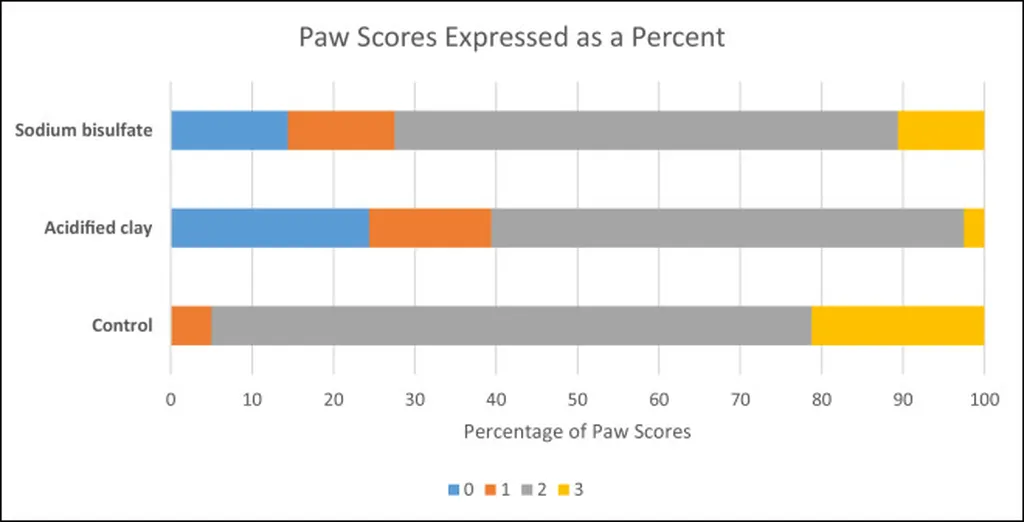In the quest to improve poultry farming efficiency and bird welfare, a recent study has shed light on the effectiveness of two common litter amendments: acidified clay and sodium bisulfate. Conducted by J.B. Payne of C&S Chemicals in Roswell, Georgia, and published in the Journal of Applied Poultry Research, the research offers valuable insights for the commercial poultry industry.
The study, carried out at a commercial broiler research farm, involved three separate pen trials to compare the efficacy of acidified clay and sodium bisulfate in controlling litter ammonia, pH, and total aerobic plate counts (APC), as well as their impact on broiler footpad dermatitis. With 2,400 broiler chicks distributed across 40 pens, the research provided a robust dataset to evaluate the amendments’ performance.
The results were clear: both acidified clay and sodium bisulfate significantly reduced ammonia concentrations, pH levels, and total APC compared to the control group. Notably, acidified clay outperformed sodium bisulfate in reducing ammonia concentrations and lowering pH and APC values on the first day. “The acidified clay treatment showed a more pronounced effect in the initial stages, which could be crucial for early broiler development,” Payne observed.
Footpad dermatitis, a common issue in broiler farming, was also significantly improved with both amendments. However, the acidified clay group showed better results compared to the sodium bisulfate group. “Improving footpad health not only enhances bird welfare but also increases the marketability of broiler paws,” Payne explained.
The commercial implications of this research are substantial. By optimizing litter conditions, poultry farmers can enhance broiler rearing efficiency and productivity. Reduced ammonia levels and better footpad health contribute to a healthier flock, potentially lowering mortality rates and improving overall farm profitability.
As the poultry industry continues to seek sustainable and effective solutions for litter management, this study provides a strong foundation for further exploration. The findings suggest that acidified clay and sodium bisulfate are valuable tools in the quest for better poultry farming practices. “This research highlights the importance of litter amendments in modern poultry production,” Payne concluded. “It opens the door for further innovation and optimization in this critical area.”
With the poultry industry constantly evolving, the insights from this study could shape future developments in litter management and bird welfare. As farmers and researchers continue to collaborate, the quest for more efficient and sustainable poultry farming practices is sure to yield even more promising results.

